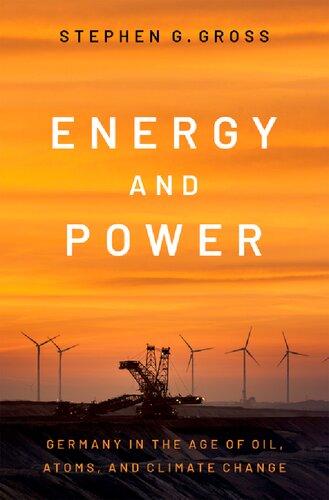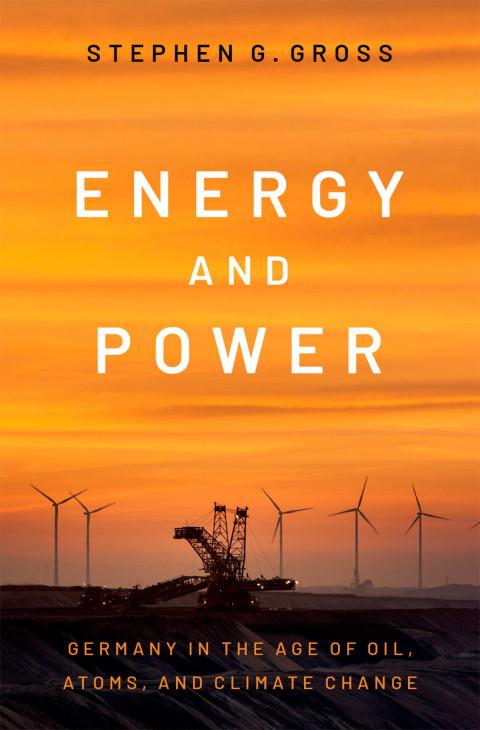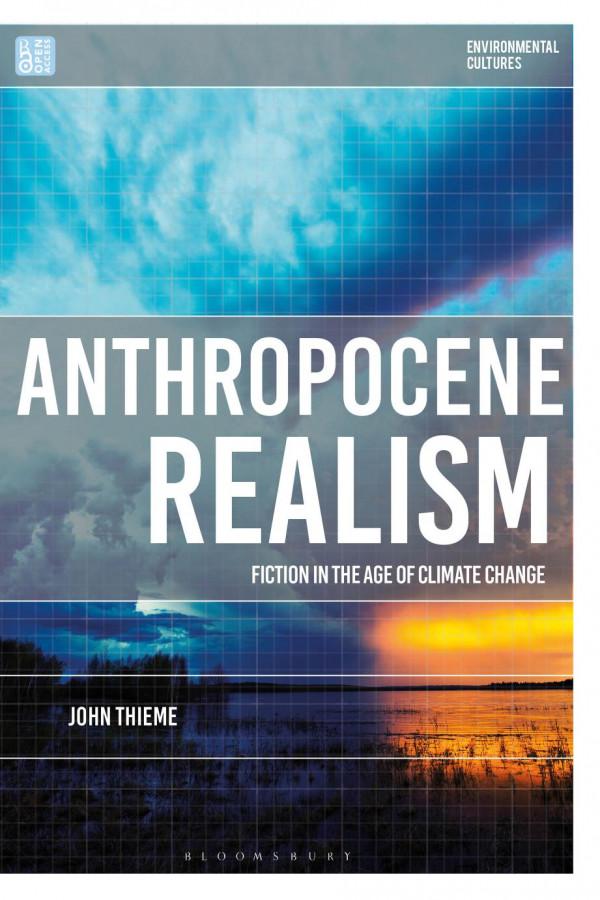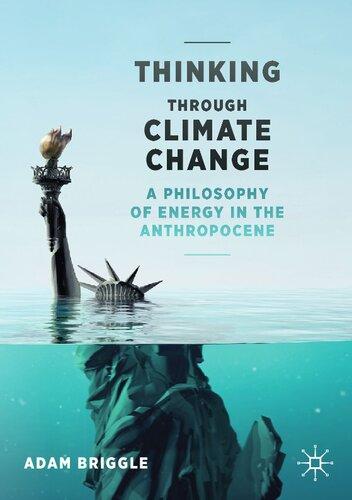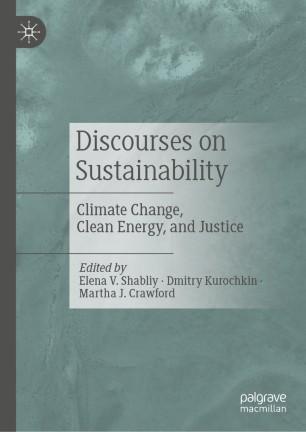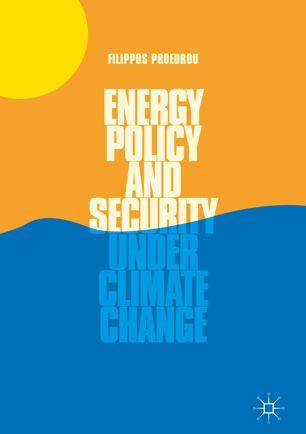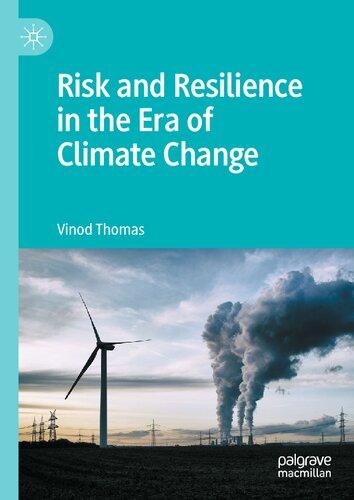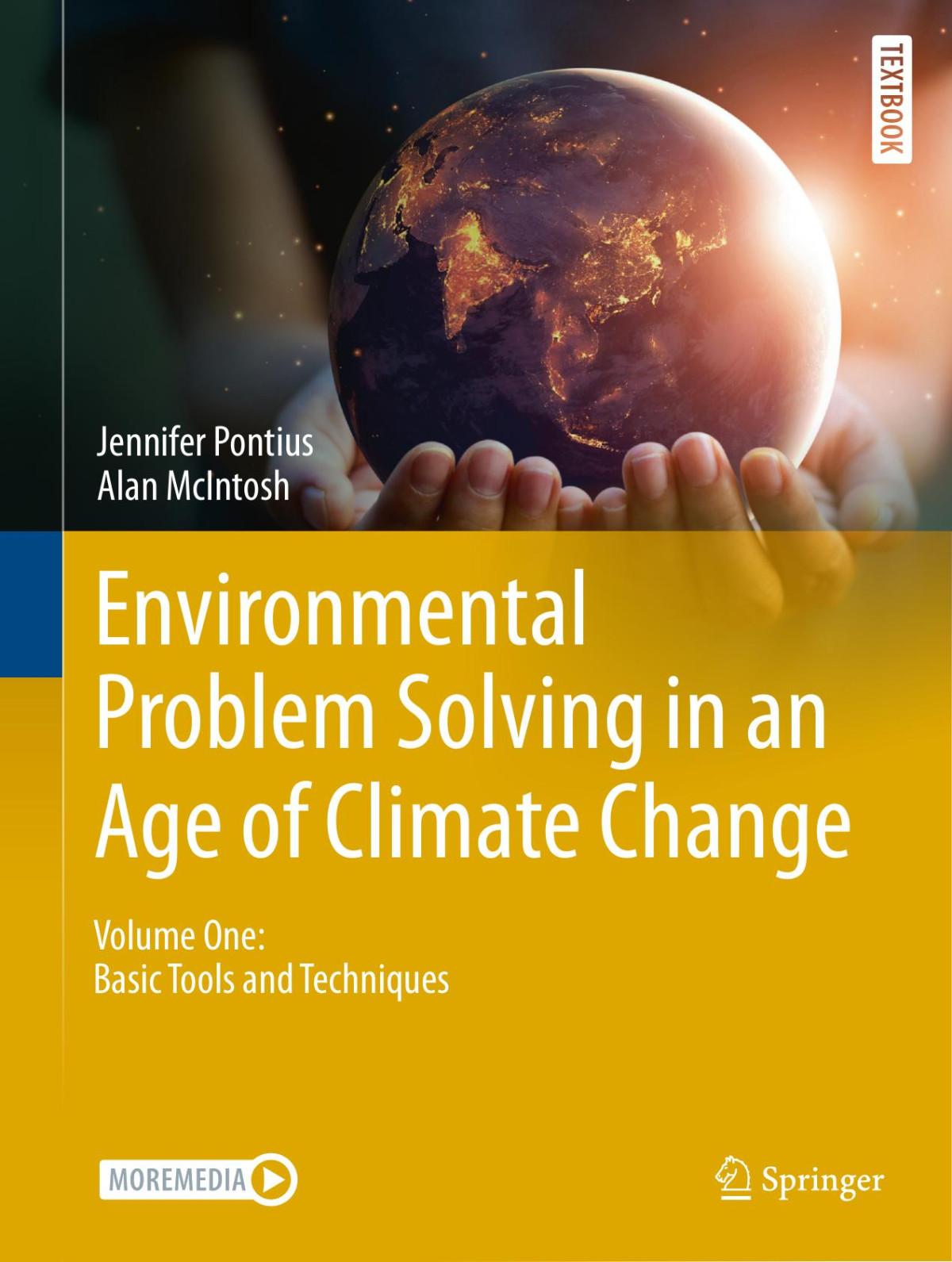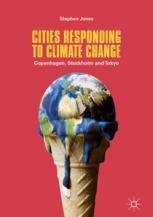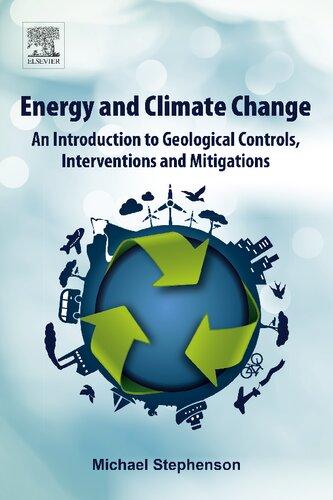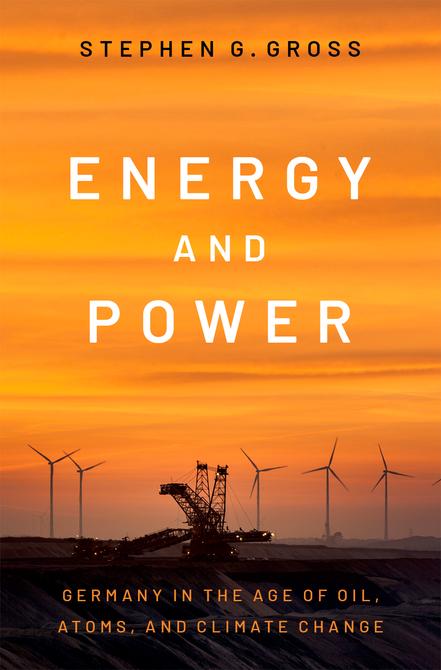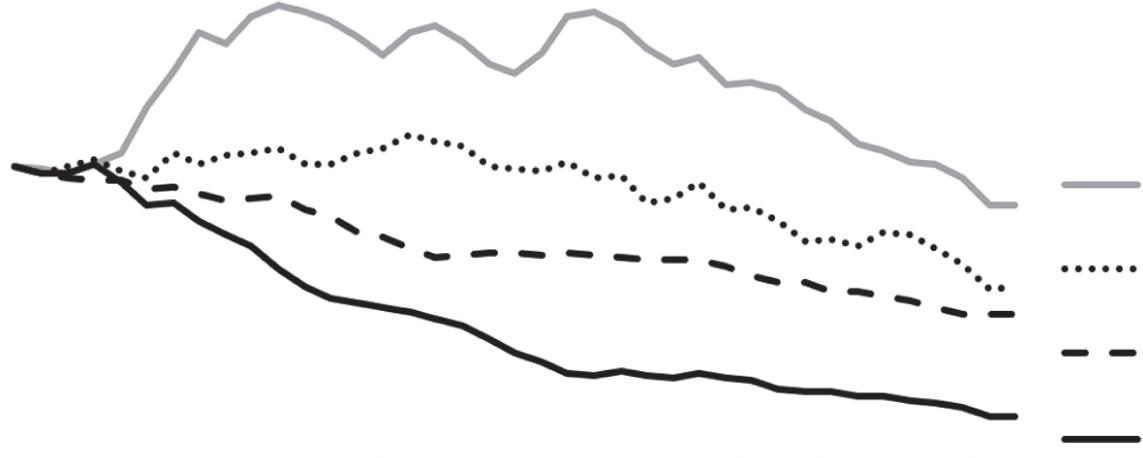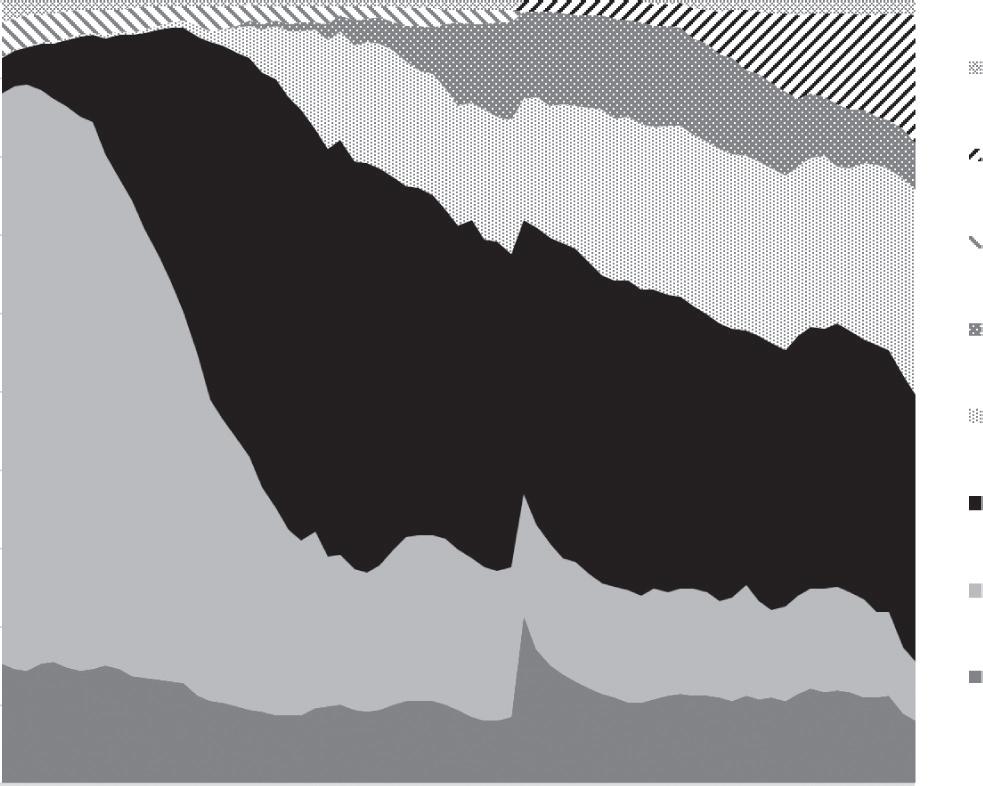Introduction
Te Paradoxes of German Energy
Te resource base is far more fundamental to economic development than questions of political and social order. Te old dispute of capitalism versus socialism pales into insignifcance before the life-or-death choice of renewables versus non-renewable resources 1
An Energy Miracle?
On June 1, 2004, before 3,000 delegates from over 150 countries, Germany’s famboyant environmental minister declared that “the age of renewables has now begun.” Jürgen Tritin, a stalwart of the Green Party known for his acerbic wit, was presiding over an international conference on renewable energy in his nation’s former capital of Bonn. Refecting on Germany’s recent achievements, Tritin saw a model for the world. Energy efciency and solar and wind power, he proclaimed, were the key to fghting global warming and bringing prosperity to the world. No more were these technologies a “niche market,” he concluded. “Tey are our future.”2
Tritin had good reason for optimism. Since 1998 he had helped craf a groundbreaking political experiment: the frst coalition of the Lef in a large country that combined a Social Democratic Party with a new political force, the Greens. Between 1998 and 2002 these former rivals passed a remarkable array of legislation that aimed to rebuild their nation’s infrastructure on an ecological foundation. “Te end of the oil age,” so they hoped, “is in sight.”3 Afer 1998 this Red-Green government began placing solar panels on 100,000 roofs. It levied an ecological tax on energy use. It reformed the power grid by guaranteeing profts to anyone who produced electricity from renewables. Its development bank aggressively fnanced energy efciency enhancements in Germany’s buildings and homes. For Hermann Scheer, Tritin’s Social Democratic partner,
Energy and Power. Stephen G. Gross, Oxford University Press. © Oxford University Press 2023.
DOI: 10.1093/oso/9780197667712.003.0001
known as the “solar king” by his allies, this was “an economic revolution of the most far-reaching kind.”4 Its architects aspired to smash the power of fossil fuel conglomerates and erect a more democratic economy. Tey aimed to turn Germany into a “global leader” of green technology, where the “export markets are huge.” And they promised to liberate the nation from the “energy conficts” that loomed as the world burned through its conventional petroleum.5
When Tritin addressed the renewable conference on the banks of the Rhine, these promises seemed on the cusp of realization. Germany boasted a third of global wind power capacity. Solar was growing even faster. By 2004 the Federal Republic accounted for 80 percent of all solar photovoltaics in Europe. And by 2006 it was installing nearly half of all new solar panels in the world, despite a cloudy climate that gets as much annual sunlight as Alaska. New production techniques developed by Germany’s Mitelstand companies made them global leaders in solar and wind technology, unleashing a revolutionary fall in the cost of renewables and bringing carbon-free energy into the realm of the economically possible. Te country, moreover—the third largest manufacturer in the world afer the United States and China—had taken great strides in reducing its energy footprint. While America, France, and Britain were all reaching a new historical peak in the total volume of energy they consumed, Germany’s energy use had fallen by 15 percent from its 1979 height even as its economy expanded (see Figures I.1 and I.2).6
Against the backdrop of this success, Scheer and Tritin heralded the RedGreen agenda as humanity’s best chance to stop global warming. In retrospect many agreed, lauding Germany as “the most successful large advanced economy
195019551960196519701975198019851990199520002005
Figure I.1. Total primary energy consumption in the Federal Republic, 1950–2008. Indexed from 1950 = 1. Source: European energy data from Energy History: Joint Center for History and Economics. htps://sites.fas.harvard.edu/~histecon/energyhistory/; American energy data from U.S. Energy Information Administration. www.eia.gov; GDP and price index from the OECD. htps://data.oecd.org/.
0.2 0.0 19701975198019851990199520002005
Figure I.2. Energy intensity of the Federal Republic’s economy (primary energy consumption divided by real GDP), 1970–2008. Indexed to 1970 = 1. Source: European energy data from Energy History: Joint Center for History and Economics. htps://sites.fas.harvard. edu/~histecon/energyhistor y/; American energy data from U.S. Energy Information Administration. www.eia.gov; GDP and price index from the OECD. htps://data.oecd.org/.
to date in developing its clean energy economy,” as a “world leader in energy effciency,” as the nation that lit the “touchpaper” that would forever change the state of renewable power.7
Today the Federal Republic is continuing this energy transition—its Energiewende in the hopes of combating global warming. But this transition was never only, or even primarily, about climate change. Te promise of hightech exports and skilled jobs, of a more democratic society, of a geopolitically secure nation—all of these dreams have been as much an engine of energy policy as has the quest for a stable climate. Many of these hopes date to the 1970s, before global warming was fully understood, or earlier still, to the 1950s. Only by unearthing this deeper history, and looking beyond climate change, can we understand how energy came to be the central problem of German economics and politics in the twenty-frst century.
Te path toward a greener energetic future, moreover, has been litered with contradictions, advances, and backtracking. At nearly the same moment that Triten was touting his nation’s accomplishments, German companies were embarking on a new round of investment into power plants that ran on dirty, lignite coal. Tese would give Germany the notorious reputation as home to eight of the twelve largest sources of carbon in Europe. Te country was stumbling into ever greater reliance on natural gas from a dangerous nation that would eventually threaten peace in Europe: Vladimir Putin’s Russia. Te Federal Republic, moreover, increasingly found itself at odds with the rest of the European Union, which was struggling to build a common energy agenda. And despite decoupling energy use from growth, by the 2010s Germany seemed
poised to miss its carbon targets. Critics spoke of an “Ecocide,” the title of a dystopian flm in which citizens of the Global South sue the Federal Republic for endangering the right to life. In some ways, the very success of Germany’s green vision entrenched the need for conventional fuels, at least for a time.8
Te longer history behind these energy successes and failures, behind Germany’s energy dreams and paradoxes, is the subject of this book.
Puting Energy in European History
Why do we use the energy we do? How do we shif from one energy system to another? How do our choices about energy shape society and politics, and the other way around? In our era of global warming, these questions have taken on an urgency once reserved for issues of war and peace. Today carbon dioxide in the atmosphere is creeping toward a level the Earth has not experienced for several million years. As a consequence, the world is warming at an astonishing pace. In 2015 the Paris Climate Accords aspired to hold temperature increases to 1.5 degrees Celsius. Tree years later the International Panel on Climate Change (IPCC) all but accepted that humanity would smash through this limit by 2030. Even if we do not, we watch wildfres burn through California and Southern Europe and hurricanes rip through the Atlantic bringing once-in-a-century storms every few years. Te “climate catastrophe,” as West Germans named this future in the 1980s, is upon us.9
Perhaps the most wicked aspect of this problem is that carbon emited anywhere—Germany, the United States, China—fows into the same atmosphere, such that those sufering the greatest impact from warming are not those who emited this carbon in the frst place. Global warming embodies the pernicious logic of a new sort of modernity, where the risks of industrialization transcend space as well as time, making it inordinately difcult to hold accountable those who are responsible.10
Te prime source of human atmospheric carbon is the world’s fossil energy system. Today a mind-boggling network of coal mines and oil felds, ofshore rigs, fracking wells, pipelines, compressor stations, tankers, and power plants prepares nearly 160,000 terawat hours (TWh) of energy each year to make a lifestyle of iPhones and automobiles possible. In 1950 the world consumed a small fraction of the energy it does today. Transforming this energy into usable form has been accomplished through one of the most stupendous outlays of capital in human history. Each year investors spend nearly two trillion dollars upgrading the “second crust” of the earth that is our energy system.11
In one sense, the cost seems worth it. Tis energy leverages human ingenuity, providing a panoply of goods and experiences that were unimaginable to our
grandparents. Energy is the ability to do work, and one can translate its power from one form to another. A “cup of gasoline,” for instance, has the same energy as ffy people “pulling a Fiat for 2 hours.” With the energy from our fossil fuel system, it is as though each person today has nearly 90 people working for them around the clock, providing light, motion, and heat. But these averages obscure vast diferences across space and culture: an average American consumes 80,000 kilowat hours a year, a German 44,000, a citizen of the Democratic Republic of Congo just 489.12
Tis fossil energy, however, is wrecking the natural foundations of our society. It has been for decades. Our hydrocarbon supply chain is characterized by immense waste. Only a miniscule fraction of the energy embodied in a lump of coal or a barrel of oil is actually used to cool milk in the fridge or move people in cars: over 97 percent is lost through the multilayered process of extracting, transforming, and distributing the energy that comes from fossil fuels. With this immense waste, burning fossil fuels has accounted for over two-thirds of all the carbon humanity has put into the air. And the pace is accelerating: since the frst IPCC report in 1990, humanity has burned more carbon than in all previous recorded history.13
Understanding why so much of the world has adopted an economy rooted in oil, coal, and natural gas is more urgent than ever. To identify the causes behind our fossil system and the actors who “lit this fre” of global warming, we must look to the specifc choices made by particular groups, classes, businesses, governments, political parties, and experts.14 For one of the paradoxes of global warming is the incredible sway of unintended consequences. Many, if not most, of the decisions that placed humanity on a trajectory of global warming were made before climate was even politicized, and for reasons that had litle to do with carbon and everything to do with jobs, power, geopolitics, or profts.
In fact, energy is everywhere in history, shaping our understanding of why industrialization began in a cold, damp corner of Europe or how the United States came to exercise a unique sort of global power in the twentieth century. Yet too ofen energy remains a side note in the narratives that have shaped our understanding of the contemporary world. Te short twentieth century made famous by Eric Hobsbawm, which began with World War I and the Russian Revolution and ended with the collapse of Communism in 1989, is defned through politics and ideas; its central experience the “religious wars” fought between capitalism and socialism. Te most infuential narratives of twentiethcentury Europe revolve around the “ideological struggle for Europe’s future,” and how liberal democracy emerged changed from its contest with fascism and communism.15 Above all, it is the shadow cast by the violence of World War II and the Holocaust that orients the masterworks of twentieth- century Europe.16
Tese narratives understandably focus on the ideas and social structures that spawned war and genocide, alongside the paradox that these catastrophes occurred as Europeans were experiencing the most radical material changes since the dawn of agriculture. Energy belongs to both sides of the coin, the catastrophic and the uplifing. Yet it hardly appears in stories that privilege politics, ideas, or diplomacy. Some histories note how “ridiculously cheap” energy underpinned the golden years of growth afer 1945. Energy briefy rears its head again to explain the rise of ecological movements in the 1960s and 1970s. It makes a fnal appearance with the oil shocks of 1973 and 1979. Tat Europe changed its approach to fossil fuels afer this pivotal decade “speaks for itself.” But does it?17
Energy carries more hef in histories of twentieth-century Germany, but only recently. In 2003 two preeminent scholars could interpret this nation’s “shattered” past without mentioning energy at all.18 Even more than for Europe, postwar history for Germany is “a history of atempts to come to terms with the ‘German catastrophe,’ ” that is, the Tird Reich, and to understand how National Socialism and the Holocaust were followed by the rise of a liberal democracy in the Western half of the country.19 Te prime questions of postwar Germany all stem from this efort to ft the two halves of the twentieth century together: How did the Federal Republic forge democracy afer the Tird Reich? How did it achieve an Economic Miracle afer world war? How did it come to terms with its Nazi past? How did Germans navigate the division of their once powerful nation?20
Now new challenges associated with globalization, neoliberalism, and ecology are leading historians to refocus their gaze away from mid-century and look for the origins of the twenty-frst century in the trauma of the 1970s, which witnessed everything from the decline of heavy industry to domestic terrorism, oil shocks, and the collapse of monetary systems.21
As the 1970s have gained prominence, so too has energy. One goal of this book is thus to integrate energy into the arc of postwar history.22 European historians can no longer treat energy as mere background. We must shine a spotlight onto what has become the most pressing question of our time: how the consumption of massive amounts of energy has become naturalized, and with it the accompanying volumes of carbon emissions that are changing our environment. Historians must identify those actors who caused the emergence of high-energy society, understand the rationale behind their actions, and explain why some individuals, organizations, and states revolted against this system. But historians must also explore how the consumption of energy is entangled with landmark developments that defne the conventional narrative of modern Europe, like the rise and fall of governments, the success or failure of ideologies like neoliberalism, the spread of new cultural mores,
or the ebb and fow of geopolitical frictions connected to the Cold War and decolonization.
Indeed, energy’s place in history is far from self-ex planatory, and it can open an entirely new perspective on the prime topics of the twentieth century. Te end of World War II marked a watershed by dividing Germany and reconfguring its political system. But in the sphere of energy and consumer life, the greater transformation occurred in the decade afer 1958, as the nation became a high-energy society that ran on petroleum and electricity. Cheap energy may have fueled the Economic Miracle, but why was energy inexpensive in the frst place? What social, political, and geopolitical work went into making it so? West Germany’s social market economy looks much diferent once one appreciates how regimented the fow of energy was. Afer 1949 Germany may have been a divided power in the heart of Europe. But equally important is understanding its place in a global hydrocarbon network that was in a profound state of fux. Te Federal Republic is also known for supporting the integration of Europe. But energy ofen put it at loggerheads with its allies and with the European Community, revealing a deeply nationalist orientation at key moments in history. Energy even lends a new perspective on how West Germans grappled with their terrible past. For as a new generation in the 1960s and 1970s began questioning their parents’ participation in the Nazis’ crimes, many also turned to questions of ecology, energy, and nuclear power to criticize the continuity of the Federal Republic with the Tird Reich, calling for a decentralized, more democratic form of governance.
Germany’s Lessons for Energy Transitions
Energy belongs to the history of twentieth-century Europe and Germany now more than ever since historians’ “vanishing point” is shifing, and with it the questions we ask.23 Like the 1970s, the turn of the millennium has become a new focal point of research. For by then, at the very latest, the global community knew with uter clarity that it was headed toward a carbon catastrophe. “If no efective countermeasures are taken,” so Germany’s parliamentary inquiry into climate change announced in the 1990s, “then we must expect dramatic consequences for all regions of the world.”24 Put diferently, it was clear the world needed a transition away from fossil fuels. But nearly everywhere, political and corporate leaders were failing miserably to make headway.
Why was this transition stalled? And how have energy transitions happened throughout history? Herein lays the second goal of the book: to see what Germany’s postwar experience can teach us about the nature of energy transitions: why they occur, how they are experienced, and how they are connected to other types of change. Understanding past transitions, one hopes,
can ofer landmarks for appreciating the sorts of actors, processes, or arguments that infuence energy outcomes, guide our expectations for what is feasible, suggest the range of challenges and opposing forces that lay ahead, and not least, reveal how energy is entangled with so many other spheres of life. A new corpus of energy histories has tackled these questions, illustrating how historians have much to contribute to the fght against global warming.25
Yet the conventional understanding remains dominated by other disciplines that explain transitions through changes in technology and prices. Tat petroleum became the prime global fuel afer 1945 has everything to do with efciency and litle to do with politics or social formations, we are told. As Bruce Usher puts it, “basic economic principles, primarily cost, are the main drivers of energy transitions. Cost is key.”26 Marxian scholars have pushed against this price-is-king paradigm by portraying transitions as class conficts in which the cost of energy hardly maters. Instead, new energy arrangements triumph when they enable those with capital to beter control labor. Britain’s industrial revolution to coal-fred steam engines occurred, in this rendering, “in spite of the persistently superior cheapness of water,” or put diferently, because steam overcame “the barriers to procurement not of energy, but of labour.”27
Both views have merit, but both err in elevating a single dimension of transitions: price versus social confict. Cost and efciency certainly mater. Energy shifs, however, are far more complex than this. Prices and markets are themselves embedded in cultural practices, social institutions, political arrangements, and geopolitical constellations. Te price of a commodity, especially something as laden with power as energy, is determined as much by struggles between interest groups, political actors, and experts as it is by supply and demand.28
To integrate these two views we must cast a wider net, one that captures changes in technology and prices while paying atention to how these shape, and are in turn shaped by, social and political conficts.
Postwar Germany ofers fertile ground for this. With its succession of energy upheavals, the history of the Federal Republic of Germany can illuminate why transitions succeed or fail, and how such shifs are tied to changes in other spheres. Te country’s experience illustrates how three types of forces make energy transitions happen. First, the market for energy—or rather, the diverse markets for diferent energies—profoundly infuence whether consumers and producers adopt a new fuel. Can a new energy or technology provide the same or even beter services at a lower price than existing ones? But many forces shape prices, including states and competing social actors.29 Troughout history, and particularly in postwar Germany, the price of energy has been a political football manipulated by a range of actors. To understand why transitions unfold, one must look beyond markets to states and the social actors who shape markets.
States, the second force, have powerful reasons for desiring one energy over another, which range from geopolitics to jobs and ecology. States set the legal framework that determines how energies are distributed. States ofen favor particular fuels through instruments like taxation, import restrictions, landuse rights, or monopoly privileges. States have even acted as entrepreneurs by investing in particular technologies and creating new energy markets where none existed before. State policies, in other words, can transform a new energy from a minor commodity into a full-fedged system. But states themselves are complex entities riven by divisions. In a democracy like the Federal Republic, political parties channel these conficts, and thus exploring parties and their factions is necessary for understanding how transitions unfold.
Tird, social actors outside the state also infuence the rise and fall of energy systems, including corporations, unions, experts, and grassroots movements. Firms, above all the multinational oil conglomerates that spanned the globe, shaped policy by felding operations outside the jurisdiction of any one state. But other social forces infuenced the policy landscape as well, through lobbying and protest, by changing the terms of debate, and by mobilizing new stakeholders. In postwar Germany every energy transition was profoundly accelerated, slowed, or stalled by social actors.
Energy transitions, put simply, are not the result of an invisible hand, of technological enhancements to the “performance” of an energy, or of an inherent “quest” for greater efciency.30 Rather, they are actively made by the interaction of markets, states, and social groups. But to understand why energy transitions succeed or fail, and how they transform other spheres of life, we must add a second axis, that of mobilization. Germany’s experience illustrates how transitions require a mixture of four factors to succeed: policy linkages, political coalitions, compelling ideas about the future, and crises.
When transitions unfolded in Germany they did so, frst, because advocates of the rising energy clearly linked their agenda to other priorities. Oil, nuclear power, energy efciency, natural gas, and renewables all advanced because their proponents skillfully connected these to other goals that were dear to Germany’s political elite and public.
Second, energy transitions succeeded when their advocates forged coalitions with other groups. All of West Germany’s transitions became conduits through which political parties and social actors could build alliances to pursue agendas that were much broader than questions of what energy to consume. Tird, ideas about the future have propelled or held back new energy systems. Tose actors who could defne the problem facing society or tell compelling stories about what the future would hold if their desired energy were adopted proved the most successful in building coalitions and advancing their cause. Tese future ideas came in many diferent guises: stories about a technological gap with rival
nations; predictions about the demise of democracy; forecasts about the limits of fossil fuels. But whatever their form, these future narratives shaped Germany’s transitions because they were ofen the glue holding coalitions together and strengthening linkages.
Crises, lastly, drove new energies forward, and German energy history is impossible to understand without them. Like ideas, crises came in many forms, from moments of stupendous oversupply or shortages to human disasters. But in every instance, they helped break down older ideas, coalitions, and linkages and create the space for new ones to form.
Energy transitions, put diferently, are profoundly historical processes that cannot be reduced to a single cause. Tey are defned by contingency, the possibility of alternative pathways, and human choice. Tey happen in time, in which outside events and decisions intervene, ofen in quite unexpected ways, to reorient the way societies produce and consume energy. Tey are embedded in a welter of micro and macro developments. And they are deeply contested afairs, shaped by the collision of interest groups and political actors advocating one form of energy over another.
German Divergence
Tis book shows how the Federal Republic walked a diferent energy path than other large, industrial countries like the United States, Britain, and France. Yet that very diference can help us understand paterns common to energy transitions. Te story that follows is a mixture of peculiarities and general developments, with Germany’s energetic road both an inspiration and a warning.
As in other countries, policy in the Federal Republic was informed by two distinct energy paradigms. Te frst, older paradigm held that energy must be cheap and abundant for growth, and that these goals were best achieved through markets. But gradually a new energy paradigm arose to question this, suggesting that societies could achieve welfare without consuming ever more energy; that energy prices should be forcefully guided by the state; and that the very concept of growth must be reimagined.
Te history of German energy is the history of the struggle between these two paradigms. Te idiosyncratic thread in Germany’s story are those decisions that led the new paradigm, during crucial moments, to overcome the older one, in contrast to the United States, Britain, and France. Strikingly, the new paradigm strengthened just when neoliberalism as a philosophy of governance advanced around the world and decried the very policies that might kickstart a green transition. Even as climate change was creating an urgent need for decisive state action, faith in the efciency of free prices, skepticism of government action, and
a desire to insulate markets and private capital from democratic politics, voters, and parties spread through powerful global institutions, from the US Treasury to the European Commission and the World Trade Organization. Tat a newly reunifed Germany bucked the global trend toward market fundamentalism to pursue a state-guided drive into renewables stands out as a puzzle.31
Germany’s idiosyncratic energy trajectory grew partly from the distinctive circumstances it faced afer World War II. Whereas the United States pioneered high-energy society in the early twentieth century, powering growth with its rich endowment of all fossil fuels, Germany had preciously litle hydrocarbons in its own territory. Nor, afer their failed bid for continental hegemony under the Nazis, did Germans own any of the multinational companies that held commanding stakes in the great oil felds of the Middle East, in contrast to Americans, British, and French. Te Federal Republic came to depend on foreign-owned hydrocarbons, and this would make the possibility of a new, greener energy system seem atractive and viable earlier in Germany than elsewhere.
But more importantly, Germany’s unique path grew from specifc decisions made afer 1945. Both the United States and Britain responded to the economic malaise of the 1970s with market fundamentalism and the construction of a “neoliberal order.” Under Margaret Tatcher and Ronald Reagan, both great powers shifed energy ever more into the hands of the market, their leaders believing that deregulation, low taxes, privatization, and market pricing would revive growth and enrich key stakeholders, while also managing challenges of energy scarcity and environmental damage. Even the European Union, through its Commission in Brussels, began gravitating toward neoliberal ideas as it tried to reinvigorate growth through energy market reform. France, meanwhile, followed a dirigiste policy that prioritized nuclear power for reasons of national prestige, which eventually made it an alternative model for combating global warming.32
Germany, by contrast, chose a diferent energetic route from that of the United States, Britain, or France, a route that historians ofen explain by pointing to the country’s powerful environmental movement. What Paul Nolte has called Germany’s Green Sonderweg or special path—is embodied in the rise of an infuential Green Party far earlier than in these other nations.33 Te product of an anti-nuclear grassroots movement in the 1970s, the Green Party broke into national Parliament in 1983 and altered West Germany’s political culture. Tis narrative explains Germany’s energy pathway as the product of outsiders—citizens’ initiatives, lef-w ing student groups, renewable enthusiasts—who hoped not only to reform the energy system, but to transform West German political culture by building a small-scale, more democratic, and decentralized society. In the words of Craig Morris and Arne Jungjohann, “Germany’s push for renewables stems from the people, not the government.”34
Tis story, however, shades into triumphalism and disregards the energy problems that this movement from below itself created. Equally important, it overlooks a broader political economy in the Federal Republic whose internal dynamic generated powerful reasons—ofen reasons quite diferent from those of the Green Party—for favoring a transition of fossil fuels or nuclear power. Tis Green Sonderweg narrative juxtaposes its protagonists against a technocratic, closed-door style of governance hell-bent on consuming ever more energy at the expense of both the demos and the environment. But by rendering a monolithic image of the establishment against which the Green Party reacted, it overlooks elements of change that came from political and economic insiders, above all from the reform wing of the Social Democratic Party (SPD), unions, some domestic companies, and mainstream experts.
Rather, Germany’s distinctive approach to energy emerged from a synthesis of outsiders and insiders, who saw the beneft of working through market devices to shape energy consumption and production, but who accepted that energy markets were inherently political. Tis was corporatism in maters of energy, which brought various and ofen competing stakeholders together during infection points and crises to negotiate the energetic future of the nation. Instead of trying to “encase markets” and protect them from politics, as neoliberals did elsewhere, German policymakers embraced the fact that social actors and politics should determine the basic orientation of the energy system.35 But in contrast to dirigiste systems, as in France, the Federal Republic deployed market mechanisms that it guided with a strong hand.
Te Story in Brief
Te anti-nuclear movement and the Green Party are only part of the story behind Germany’s distinctive energy policy, which actually begins much earlier and was profoundly shaped by the country’s turbulent energy history. In fact, since 1945 the Federal Republic has experienced some of the sharpest energy transitions of any industrial economy: no less than fve of them. Te frst was the rise of oil, a pan-European phenomenon but one in which no country participated more powerfully than West Germany, once the hard coal capital of the continent. Next came nuclear power: a transition in which West Germany was also superlative in many respects. Starting its atomic program afer the United States, France, and Britain, the country caught up through an incredible efort by state ofcials and scientifc experts. Ten in the 1970s reformers reacted against the breakneck speed of nuclear development and the 1973 oil shock to launch the country’s third transition, to energy efciency. At the same time, the Federal Republic became entangled with the Soviet Union in building a vast new infrastructure that
propelled the rise of natural gas throughout Central Europe in a fourth transition that came to fruition in the 1990s. Finally, afer 1989 the newly reunifed Germany embarked on a transition to renewable power in an efort not only to tackle global warming, but to solve a welter of economic and political problems.
Te frst of these transitions is where West Germany’s experience with energy began to diverge already from the United States, Britain, and France. Te country experienced a more rapid shif to oil than any other industrial country (see Figure I.3). Afer 1950 foreign-owned oil fooded the country and wrecked the once powerful hard coal industry. Tis transition wiped out hundreds of thousands of jobs, destroyed an immense amount of capital, and forced domestic companies to move into more dynamic sectors.
Tis frst postwar transition, moreover, led the nation into great dependency on a foreign-owned hydrocarbon supply chain over which the Federal Republic had litle control because it lacked a multinational oil company. From an early stage, this supply chain proved susceptible to crises: closures of the Suez Canal in 1956 and in 1967, and coal crises in 1950, 1958, and 1966. Well before the pivotal oil shock of 1973, during the very Economic Miracle that is so ofen described as an era of stability, the nation sufered no less than fve energy crises.
Tis turbulence turned energy into a politicized arena in West Germany much earlier than in North America, and shaped policy in several ways. First, as energy became politicized, West Germans began paying closer atention to how it was priced. Beginning with vitriolic debates in the 1950s, politicians,
Figure I.3. Te Federal Republic’s mixture of primary energy consumption, 950–2020. Percentage of total energy consumed. Source: Data from AG Energiebilanzen e.V.
experts, and the public came to view the price of energy not only as something that the market could not determine, but as something that it should not determine. Miners, environmental activists, and others began calling on the state to guide the price of energy to achieve specifc goals. Tese goals would change with time, and eventually most groups came to accept that energy was a political market, and many argued for a high energy price to stimulate conservation and encourage alternative energies.
Second, because of energy’s politicization, West German economists began studying it as a coherent feld of knowledge earlier than elsewhere. On the one hand, energy economics became a pillar of West Germany’s closed-door technocratic governance, which would spark a backlash that demanded a more democratic energy system. On the other hand, this feld of knowledge did not dematerialize the economy in theory, as did mainstream economics in the United States. Because energy was so crucial to their models, German economists grappled with the efects of energy crises more than their counterparts across the Atlantic. Tis eventually led them to advocate an active government agenda instead of leaving energy to the market, and to champion the new energy paradigm.
Tird, the politicization of energy made security a major issue in West Germany well before 1973, as politicians, the coal industry, and nuclear advocates criticized the foreign- owned hydrocarbon supply chain already in the 1950s and 1960s, to be joined later by environmentalists and natural gas boosters. Conservation could gain more traction among political insiders than in the United States or Britain because it was presented as a solution to the long- standing problem of security. So too did natural gas from the Soviet Union.
West Germany’s shif to oil, in other words, created a fertile landscape in which the seeds of a green energy transition might later take root, even if these were planted for reasons that had litle to do with ecology or climate. But other developments contributed to this landscape, above all West Germany’s selfunderstanding as an export nation. With an economy powered by energyintensive exports, like steel and chemicals, afer 1950 Bonn worked to keep fuel prices low. But as the global economy transformed and exposed these older industries to foreign competition, German leaders began seeking new sectors that could excel in the global marketplace, which it assisted with an “entrepreneurial state” that guided research and created new markets.36 In the 1960s Bonn kick-started nuclear power because experts believed reactors would be the next great export engine. As the prospect for nuclear exports withered, some looked to the construction of natural gas infrastructure across Eurasia as a new engine for export contracts. But others fastened onto technologies that could either conserve energy or produce it from new sources, redirecting the entrepreneurial
state toward renewables in order to stimulate exports, creating avenues for collaboration between business elites and environmentalists.
Afer 1980, in sum, many West Germans wanted to overhaul their nation’s energy system. But calls for a transition were coming from two diferent directions. Te Greens hoped to democratize the energy economy through a decentralized, citizen-r un power grid. Meanwhile, insiders—the SPD, some unions, conventional experts, and key business groups—wanted to forge a new energy system in the name of security and sales abroad.
What brought these strands together were the languages of Ordoliberalism and Ecological Modernization. Te former shared similarities with neoliberalism in calling for a strong state to set ground rules for competitive markets. But its early theorists never sought to extend market logic to all walks of life, and they fxated on economic concentration as the root of most problems. Tis philosophy profoundly infuenced West German politics afer 1950, and it provided a common language for parties—even the Greens, eventually—to justify their programs to a public proud of the social market economy. Over time, however, its formal ideas became hollowed out, and by the 1990s, Ordoliberalism meant diferent things to diferent groups. But this was its strength as a language of politics, which the Red-Green coalition would use to sell its energy agenda afer 1998.
Substantively more important was Ecological Modernization, the bedrock of the new energy paradigm, which highlighted the social costs of production not included in market prices. Afer 1980, West German economists integrated ideas about the social cost of energy with new theories of technological change to create a novel justifcation for state-guided prices and investment. When global warming became a burning issue in the 1980s and 1990s, policymakers thus had a language that was well-suited for integrating economic and environmental goals, for building alliances across parties, and for justifying robust state action in an era defned by market fundamentalism.
In 1998 these two strands—insiders and outsiders: Greens on the one hand; Social Democrats, traditional experts, some unions, portions of the business community on the other—came together to pass groundbreaking legislation that envisioned a holistic transformation of Germany’s energy system. And while the immediate spark for the Red-Green agenda came from anxieties about global warming, it arose, in fact, from ideas and from a political economy that had been in gestation for decades, and for reasons that initially had litle to do with climate.
Te German story that culminates afer 2000 shows how the history of energy is essential for understanding the twentieth century. Te rise and subsequent revolt against high energy, carbon-intensive society is entangled with the pivotal, conventional moments of postwar history; we cannot understand one without
the other. Te Economic Miracle; the emergence of consumer society; the rise and the faltering of Social Democracy; the integration of Europe; the Cold War and the collapse of Communism—all of these events have shaped, and in turn been shaped by, Germany’s rapid succession of energy transitions since 1945. In the Federal Republic, the politicization of energy began well before the 1973 oil shock, the emergence of climate change as a global issue, or the rise of the Green Party. Tis timing helps explain the nation’s idiosyncratic energy trajectory, which was made by a tense interaction between political insiders and outsiders. And it explains as well the intensity with which Germans approach maters of energy today.
But the story that follows also shows how energy transitions are multilayered historical processes shaped not only by technology and prices, but also by human agency and the ability of individuals and organizations to mobilize for or against particular fuels. Alternative paths abound throughout history: the essence of the discipline is excavating these alternatives to understand why some triumphed and others failed. Germany’s energy path hinged on the interaction of global and domestic markets, political parties, experts, and grassroots mobilization, and it was determined by those actors who efectively built alliances, linked energy to other issues, deployed powerful visions of the future, exploited crises, and ultimately, overcame their opponents. As Hermann Scheer poignantly observed, transitions have spawned some of the most intense social conficts in history, precisely because energy touches so many aspects of life. Germany’s postwar history illustrates just this point: how energy has been a batlefeld in the twentieth century, and will continue to be so in the twenty-frst.
